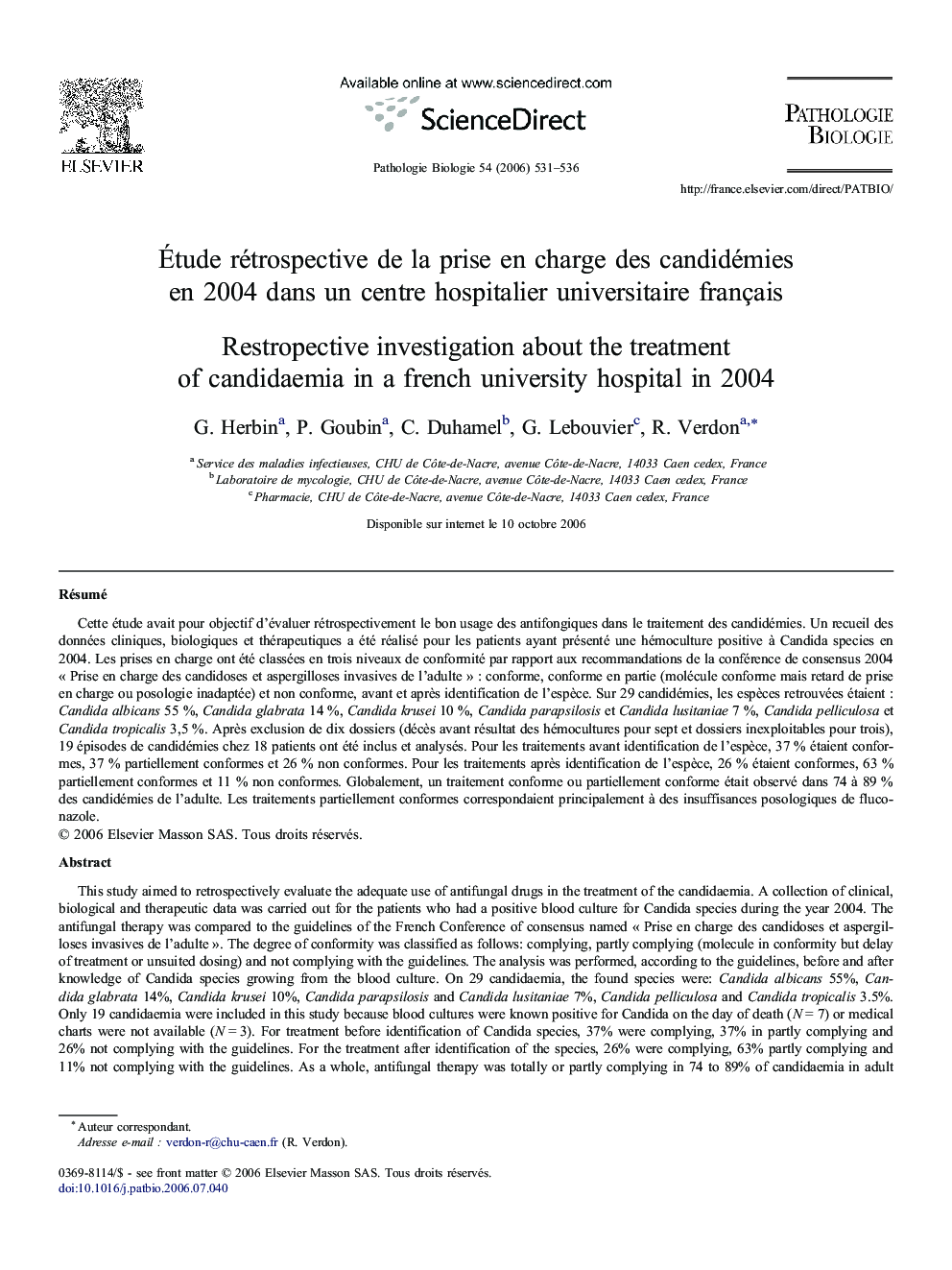| Article ID | Journal | Published Year | Pages | File Type |
|---|---|---|---|---|
| 4136835 | Pathologie Biologie | 2006 | 6 Pages |
RésuméCette étude avait pour objectif d'évaluer rétrospectivement le bon usage des antifongiques dans le traitement des candidémies. Un recueil des données cliniques, biologiques et thérapeutiques a été réalisé pour les patients ayant présenté une hémoculture positive à Candida species en 2004. Les prises en charge ont été classées en trois niveaux de conformité par rapport aux recommandations de la conférence de consensus 2004 « Prise en charge des candidoses et aspergilloses invasives de l'adulte » : conforme, conforme en partie (molécule conforme mais retard de prise en charge ou posologie inadaptée) et non conforme, avant et après identification de l'espèce. Sur 29 candidémies, les espèces retrouvées étaient : Candida albicans 55 %, Candida glabrata 14 %, Candida krusei 10 %, Candida parapsilosis et Candida lusitaniae 7 %, Candida pelliculosa et Candida tropicalis 3,5 %. Après exclusion de dix dossiers (décès avant résultat des hémocultures pour sept et dossiers inexploitables pour trois), 19 épisodes de candidémies chez 18 patients ont été inclus et analysés. Pour les traitements avant identification de l'espèce, 37 % étaient conformes, 37 % partiellement conformes et 26 % non conformes. Pour les traitements après identification de l'espèce, 26 % étaient conformes, 63 % partiellement conformes et 11 % non conformes. Globalement, un traitement conforme ou partiellement conforme était observé dans 74 à 89 % des candidémies de l'adulte. Les traitements partiellement conformes correspondaient principalement à des insuffisances posologiques de fluconazole.
This study aimed to retrospectively evaluate the adequate use of antifungal drugs in the treatment of the candidaemia. A collection of clinical, biological and therapeutic data was carried out for the patients who had a positive blood culture for Candida species during the year 2004. The antifungal therapy was compared to the guidelines of the French Conference of consensus named « Prise en charge des candidoses et aspergilloses invasives de l'adulte ». The degree of conformity was classified as follows: complying, partly complying (molecule in conformity but delay of treatment or unsuited dosing) and not complying with the guidelines. The analysis was performed, according to the guidelines, before and after knowledge of Candida species growing from the blood culture. On 29 candidaemia, the found species were: Candida albicans 55%, Candida glabrata 14%, Candida krusei 10%, Candida parapsilosis and Candida lusitaniae 7%, Candida pelliculosa and Candida tropicalis 3.5%. Only 19 candidaemia were included in this study because blood cultures were known positive for Candida on the day of death (N = 7) or medical charts were not available (N = 3). For treatment before identification of Candida species, 37% were complying, 37% in partly complying and 26% not complying with the guidelines. For the treatment after identification of the species, 26% were complying, 63% partly complying and 11% not complying with the guidelines. As a whole, antifungal therapy was totally or partly complying in 74 to 89% of candidaemia in adult patients. Lower dosages of fluconazole explained most of the treatments that partly complied with guidelines.
